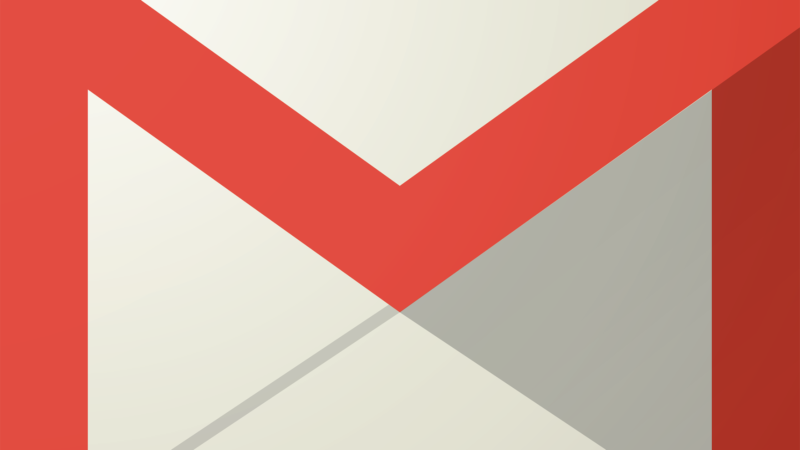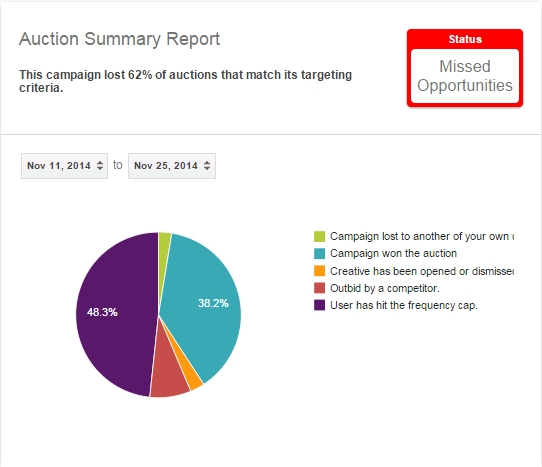
gmail sponsored promotions (gsp) has been around for about two years as a beta version of google. the platform has gone through a lot of changes during that time, and just last month, google officially opened up gsp to any advertiser.
google has not promoted the product much; The first big surge of interest I’ve seen was when Wordstream founder Larry Kim talked about the Top 10 PPC Marketing Tricks of All Time at the Search Festival in Portland recently. His presentation aroused great interest and one of his tricks is to use gmail sponsored promotions.
the game changer of hot tip “gmail ads” – mind blowing. @larrykim #searchfestival
— frances donegan-ryan (@francesdr) February 27, 2015
Given all the interest, I decided it was time to share my experiences with gsp. I was lucky enough to get access to the oldest beta version two years ago and have been working on the platform ever since. I’ve had the opportunity to run campaigns for a dozen different advertisers, and I’ve had the opportunity to develop some solid best practices.
Today, in the first installment of my two-part series on Gmail Sponsored Promotions, I’m going to share the basics and best practices of advertising with Gmail Sponsored Promotions. part 2 will include more advanced information on how to use advanced targeting capabilities and creative best practices to generate amazing gsp “ppc-like” direct response performance for almost any advertiser.
what are gmail sponsored promotions?
gsp is a unique ad type that is displayed only in personal gmail inboxes (not displayed in google business app email inboxes) in the promotions tab.
The ad consists of 2 creative elements: a teaser ad and an expanded ad unit. the teaser has a 25-character text title and a 100-character body text. there is also a 50×50 image in the ad and the “company name” that you declare.
For people using the gmail “rich promotions” beta, the trailer drops the body text and instead displays a (customizable) 580×400 preview of your expanded ad.

An advertiser is charged on a cpc basis when a user clicks on the teaser unit. this opens the expanded ad which is a simple 600 × 1000 (max) piece of html that can feature images, text, links, a form field, embedded videos, and click-to-call phone numbers.
There are no additional costs if the user clicks on the expanded ad and visits an advertiser’s site or takes any other action within the expanded ad unit.
These ads are managed on a separate platform outside of Adwords. (although google is testing gsp management within the adwords platform, this is not widely available).
Any advertiser can now participate in gsp, but you still need a google representative to activate your account. this can be done in the usa uu. by calling Google’s main support line at 866-2-google. Additionally, a prerequisite to login is that you must have an AdWords account and be in billing instead of credit card billing within that account.
who should use gsp?
gsp is what I call an “impression-based medium”. this means that a user is exposed to your ad without explicitly asking what you offer (unlike search, where users declare their intent with their keyword queries).
Like other impression-based advertising mediums like facebook ads or google display network targeting, you limit who sees your ad to those you think are most likely to be interested in their offers.
gsp has some very unique segmentation capabilities (which I’ll cover in depth in part 2 of this article). The big picture here is to remember that this is not a search; he is asking the user to do something outside of them by “telling” him that he is interested in their offers at the moment. this mindset should drive your targeting, creative design, and campaign goals.
For advertisers looking for leads and those whose conversion goal is a free trial or freemium model, gsp works well to drive these “free” conversions without much fuss. it’s pretty easy to get someone to commit to completing some form fields or any other “free” action, even if they’re not in “engagement” mode when they see your ad.
if you’re marketing a new freemium project management software solution, simply targeting people interested in “project management” at gsp will probably be enough to generate profitable free trials.
if you’re in ecommerce and asking people to pull out their credit card and spend money, gsp can work for you too. however, you need to be more careful about guidance, messages, and expectations.
For e-commerce sites where users place orders many times during their lifetime, gsp can be great for generating incremental revenue from your existing customer base by domain targeting on your own domain. can support your email messaging and highlight special offers and sales.
gsp can also be a source of new customer acquisition for e-commerce, but try to think of acquisition superficially for this to be successful. you may want to simply collect the email addresses of potential customers via gsp and nurture those customers for future revenue.
Alternatively, consider offering a daily deal or a “deal you can’t refuse” purchase and use it as an acquisition loss leader instead of asking people to commit to a purchase they just aren’t ready for prepared, no matter how interested they are in your products.
In a nutshell, if you exclusively sell $3000 sofas through adwords and do so without any shallow top funnel acquisitions and development within your marketing efforts, gsp is not the channel that will directly drive more sofa sales for you. you.
>
Instead, spend some time developing email nurturing and engagement initiatives, then come back and consider gsp to acquire incremental top funnel interest when you’ve learned how to nurture that interest into future sales.
basic targeting capabilities
gsp targeting has all the core features you’re used to with google display network (gdn) campaigns, plus some unique targeting capabilities.
in terms of conventional stuff, you can target device (called “client” in this email environment), geography (with the same nomenclature and targets that can be used in adwords), language, and gender. those form the basis of your goal.

on top of that, it uses “user attribute” targeting to build its audiences. These user attribute targets are defined by the content of a user’s last 300 emails in their gmail box.
If you use gdn, you are probably familiar with keyword/contextual targets and interest targets, which are available in gsp. the remaining three types of targeting are quite unique: domain targeting, purchase history targeting, and job title targeting. Note that job title and purchase history targeting types are smaller in scale, but can be combined intelligently to form significant audience sizes and can be appropriate for very specific products.
In part 2 of this series, I’ll delve into the best targeting methodologies for various business goals.
the reports
The most granular report provided in gsp is the “criteria” report. each goal you choose in your campaign targeting will be a row in the criteria report. anything that is “implicitly” included is not reported.
for example, if you choose all genders, your report shows a row for “all genders”. if, on the other hand, you choose men and women individually, you will get reports on the performance of each in isolation.
For this reason, it is always preferable to “split” the segmentation as much as possible. choose both men and women if you intend to target both. choose each age range, not “all”. instead of a geographical target of “united states”, put the 50 states (and dc).
other reports include a “time report” that breaks down activity by days or hours and a “conversion report” that provides some simple metrics (total conversions, views per conversion, and clicks per conversion) on each associated “action” with your campaign. . These actions include clicks to your site, all conversion goals you track in Adwords, and actions on the ad, such as clicks to call or video views.
in addition, there is a “campaign health” report. Thanks to my extensive experience on the platform, I learned to ignore the “sky is falling” tone of this report. Most of the metrics Google uses to determine “campaign status” have nothing to do with your direct response goals.
It’s alarming to see a lot of “missed opportunities” or “poor health” statuses here, but they don’t necessarily equate to much. the useful part of this report is the “auction summary report”, which shows what is happening with your ad and the audience it has targeted. can help you define where you have an opportunity to scale, why your ad isn’t showing, and if your creative is running out of target.

final tips
Now that you’ve got the basics down, I’ll leave you with a couple of additional helpful tips to get you started with gsp.
first, all campaigns must target mobile or desktop and have an ad unit and objective that suits one or the other channel.
tip: targeting by device is a bit hidden, you have to click on “clients” to see the options.
Most of the advertisers who have spent massive amounts of money unsuccessfully on gsp have run campaigns on “all clients” that had a desktop targeting conversion goal. the net result is typically that 90% of your cost was in mobile clicks that had a poor user experience.
Secondly, expect a lot of “wiggle room” in offers. often when I bid $1, I end up paying 15 cents. sometimes for the same campaign i can’t get impressions if i bid 0.50.
When trying to determine what to bid for a campaign, simply keep your daily budget very low and “raise” your bid until you can get an idea of what you need to bid to show, and what it equates to in terms of actual average cpc. once you’re comfortable with those levels, you can increase your daily budget.
Finally, I’ve been able to get results in gsp that outperform paid search by having lower cpa’s and showing higher post-conversion quality metrics (things like higher lead scores and conversion values). larger lives). but they haven’t lasted forever on autopilot.
gsp requires frequent creative updates and mining to keep new audiences going. If you’re targeting the same limited group of a couple hundred thousand people with the same creative forever, expect performance to start declining in 2-6 weeks and be prepared to rest your campaigns if you can’t continue to update creative and content. objectives.
Stay tuned for part 2 of this series, where I’ll delve into advanced targeting and creative techniques that will take your gmail sponsored promotions campaigns to the next level.
Opinions expressed in this article belong to the invited author and not necessarily to martech. staff authors are listed here.
